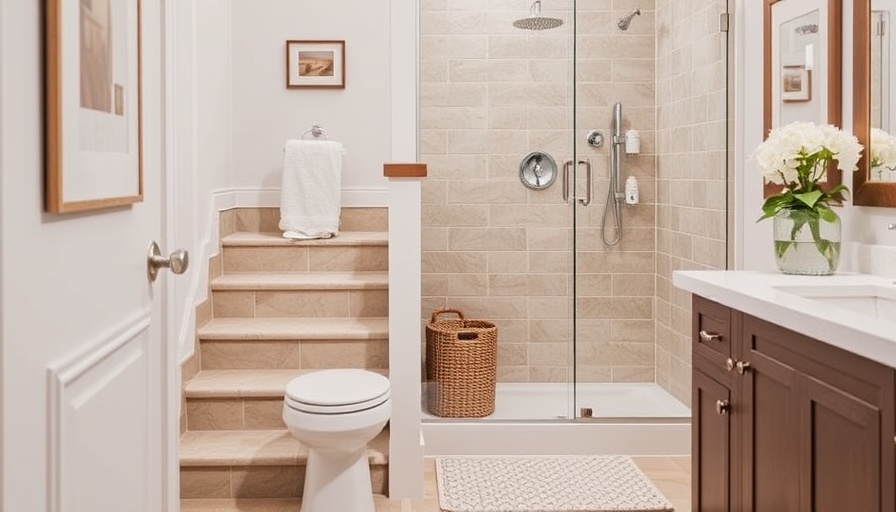
Why Home Modifications Matter for Seniors
As we age, our homes should continue to be places of safety and comfort. Consider the staggering statistic: falls are the leading cause of fatal injuries among older adults. This grim reality underscores the urgency of implementing thoughtful home modifications. These adjustments range from fundamental renovations like installing ramps or wider doorways to simple tasks such as replacing light bulbs with brighter LED fixtures. Each change plays a vital role in enhancing a senior's quality of life, allowing for an independent living environment free from constant hazards.
Critical Safety Assessments: The First Step to Comfort
Before embarking on a home modification journey, a thorough safety and accessibility assessment is essential. This process begins by identifying potential hazards around the home. Areas to focus on include staircases, bathrooms, and kitchens, where risks of accidents are common. Evaluating the individual's mobility limitations and day-to-day challenges provides a clearer picture of what modifications will be necessary.
Involving the senior in these discussions is beneficial. Their input can illuminate specific fears and obstacles that may not be immediately apparent. Engaging in this empowering dialogue ensures that their preferences are prioritized, leading to modifications that truly resonate with their life.
Essential Changes: Tackling Stairs and Entrances
Stairs pose significant risks for older adults. One vital modification is installing stairlifts, which make navigating multi-level homes safer. A stairlift can remove the anxiety associated with climbing stairs while promoting independence and freedom. In addition, handrails should be installed on both sides of staircases, ensuring they are sturdy and easy to grip. Proper lighting is another crucial aspect as bright, well-planned lighting reduces the risk of falls tremendously. Consider using motion-sensor lights to maintain illumination whenever the area is in use.
Creating Safe and Accessible Bathrooms
The bathroom can often be a landmine for seniors, so modifications in this area are imperative. Simple changes like installing grab bars in shower areas can prevent dangerous slips. Consider opting for a walk-in shower instead of a traditional tub to eliminate steeper thresholds. Non-slip mats or tiles can provide additional safety, creating a secure space for seniors who may experience balance issues.
Also, think about modifying toilet heights, especially for those who may struggle with getting up and down. Elevated toilets can greatly enhance comfort and safety, making a significant difference in daily routines.
Ensuring Safe Mobility in Kitchens
A senior-friendly kitchen should prioritize accessibility. This can include lowering countertops, ensuring that frequently used items are stored within easy reach, and employing pull-out shelves that minimize the need to bend or strain. Clear paths in the kitchen are essential for mobility, and proper lighting can aid visibility while cooking or preparing meals.
The Emotional Well-Being Connection
Interestingly, the benefits of home modifications stretch beyond physical safety. These changes can significantly boost a senior’s mental health. A comfortable environment fosters feelings of independence and self-reliance, which are crucial for emotional well-being. Spaces that promote social interaction, like open dining areas, can contribute to better overall health, reducing feelings of isolation often felt in later years.
Resources and Tools for Implementing Changes
Consulting with occupational therapists or home modification specialists can provide invaluable expertise. These professionals can suggest tailored adaptations based on their intimate knowledge of how age-related issues can impact day-to-day living. By leveraging their expertise, families can make informed decisions about which modifications will provide the greatest benefit.
Conclusion: Enhancing Life Through Thoughtful Adjustments
In conclusion, the importance of home modifications for seniors cannot be overstated. It’s about fostering an environment where independence is celebrated and safety is paramount. By taking the time to assess needs, engage seniors in the conversation, and implement meaningful changes, families can ensure their loved ones enjoy the security and comfort they deserve. Rather than merely changing the home, these modifications can transform the entire living experience, making every corner of the house a nurturing sanctuary.
 Add Row
Add Row  Add
Add 




Write A Comment